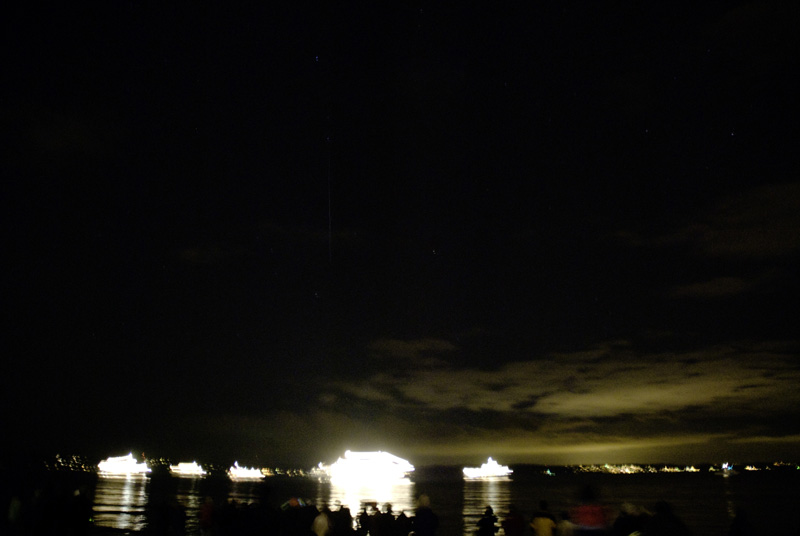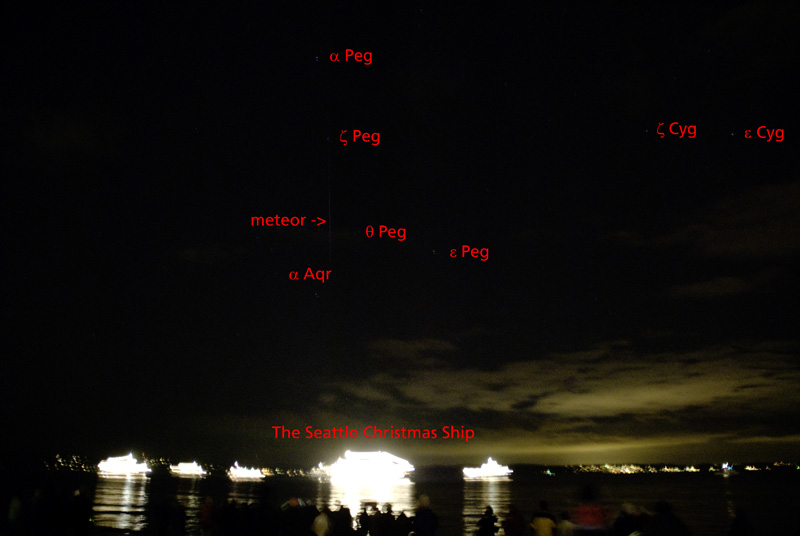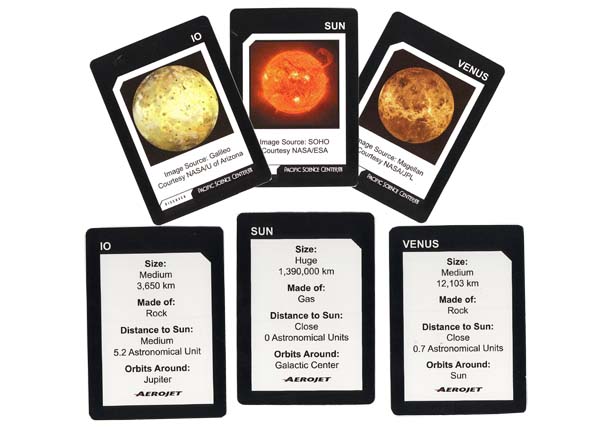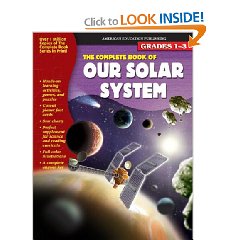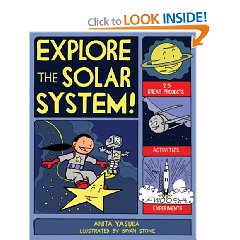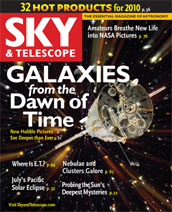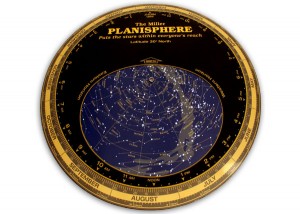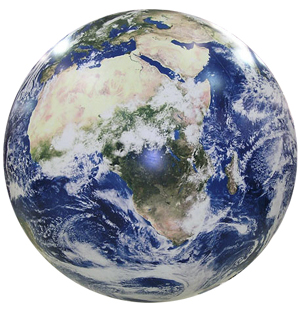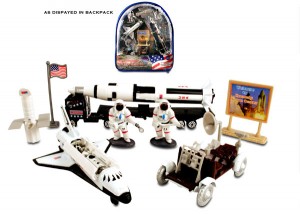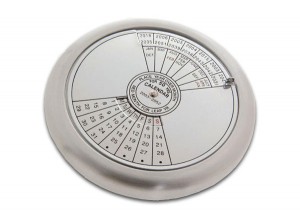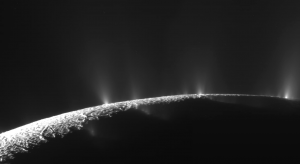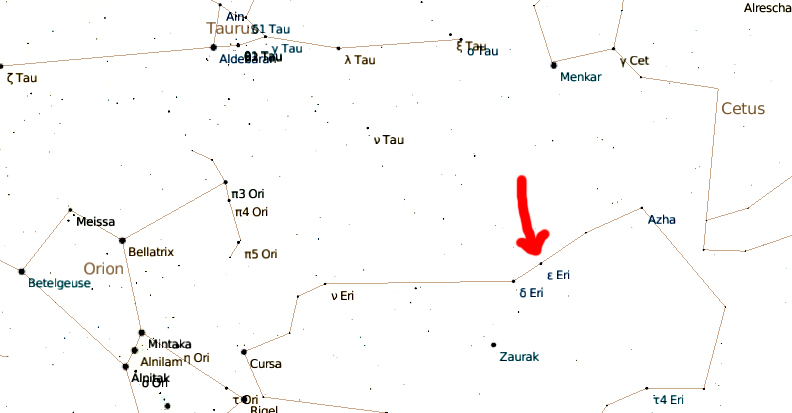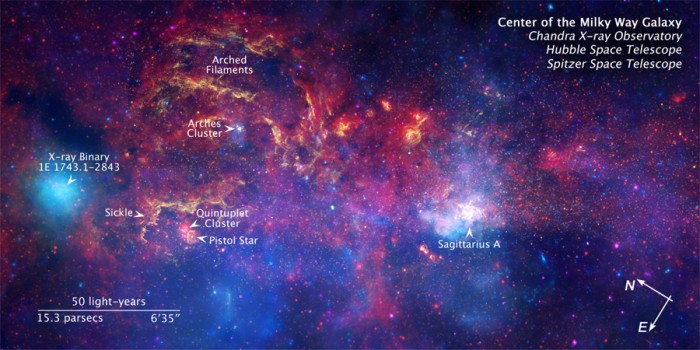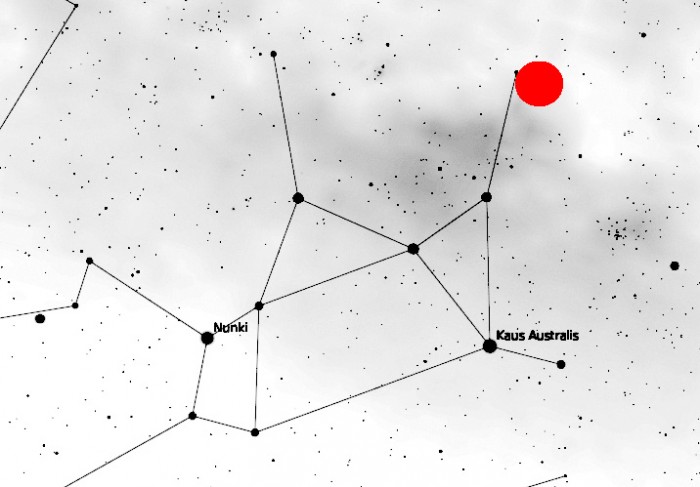 Geminids at the Seattle Christmas Ship
Geminids at the Seattle Christmas Ship
We saw a couple of Geminids this evening while we were out watching the Christmas Ship at Lowman Beach in West Seattle. (For those of you who don’t know, or those of you not in Seattle, the Christmas Ship is a local tradition that’s been going for 60 years. Argosy cruises takes a choir and a majorly awesome sound system out on a cruise around Seattle. They stop at various beaches where folks are gathered and sing (from afar) Christmas carols at you).
Well, tonight the Geminid meteor shower is peaking. I didn’t even plan to go out looking for them since it is cloudy, but since we were on the beach for the Christmas ship anyway, I looked up and the sky was semi-clear. We each saw about two, with one spectacular one right over the ship itself which made most of the Christmas ship audience ooh and ahh. Jason happened to have his finger on the shutter of his camera and caught it:
These pictures are copyright 2009 to Jason Gift Enevoldsen. If you’d like to reproduce them please credit him and let me know (alices astro info at gmail dot com). Click to see bigger.
Here are some helpful labels:
Happy meteor-watching!
![]()
~ A l i c e !
 Answering Questions: Life on Other Planets?
Answering Questions: Life on Other Planets?
Here are my questions:
1. What is the possibility that intelligent life on other planets exists?
2. Have we found any signs of life on other planets?
3. What is the possibility that any life will be found on a moon such as Europa or Titan?
Again, I greatly appreciate your time, and thank you in advance for your response.
Many Thanks,
-Jacob
Jacob, ahh, these are the questions driving our exploration of the solar system.
1. What is the possibility that intelligent life on other planets exists?
This question is more of an opinion question at this point than a science question. There are just beginning to be scientists attempting to put a number to the possibility that there is life on other planets. I’d like to break this question down.
Life within our solar system (other than on Earth)
There is no evidence of intelligent life within our solar system. This does depend on your definition of intelligent, but one definition sometimes used by astronomers is that intelligent aliens would be able to form civilizations and use radio communication. We would have picked up those radio signals long ago had they been created within our solar system. It is entirely possible that there is life that is not creating radio signals – but we might have detected that life in other ways too: noticing extra heat, carbon dioxide, oxygen, or methane in the atmospheres of other planets and moons within our solar system.
There is a scientist – Dr. Abel Méndez from Puerto Rico who is studying how likely it is that life could survive (the habitability of) on various planets and moons. He has actually ranked Enceladus, Saturn’s moon, as having more habitable area than Earth!!
Life outside our solar system
Since we have not yet found evidence of life outside our solar system, we have no way of knowing if it is there or not. If you like, you can use the Drake Equation to make your own guess, based on your own choices for the percentage of stars that you think might have planets, and the percentage of those that might be habitable. If you talk to your math teacher about how to use this formula you can get your own best guess. If you’d rather though, scroll to the bottom of this page and choose the numbers you like best, and the webpage will calculate it for you.
2. Have we found any signs of life on other planets?
Hmm. Not really. Scientists are looking for what they call “markers” of life or “markers of biogenic activity” (both phrases mean the same thing). For instance – if you see dog poop in the park, although the poop isn’t alive you can be pretty certain that there was a dog at that exact location not too long ago. Most of the markers scientists are looking for aren’t nearly as certain as that.
Methane
A while ago scientists studying Mars found new methane in the atmosphere. Methane is often produced when life forms digest food – it comes out of your body when you burp or fart. Bacteria make methane too, as do dogs, cows, and other animals. Unfortunately, the rock cycle can also make methane – especially when iron rusts. Mars is covered in rust – that’s why it is red. This discovery of methane could be either from geology or from biology, it is not necessarily a “marker of life.”
Magnetotactic Bacteria
Last week I wouldn’t have mentioned this, but there is a new scientific paper out this week. In 1996 scientists found what they thought were markers of life in a meteorite from Mars. This meteorite (ALH 84001) was discovered in Antarctica in the early 80s. There were two interesting things inside this meteorite: forms that might be fossilized bacteria, and strings of magnetite (a magnetic mineral). We can’t really tell about the shapes that might be fossilized bacteria, but the strings of magnetite are identical to magnetite strings created by certain bacteria (magnetotactic bacteria) here on Earth. This is a very new paper, so other scientists might have other ways to interpret the same information.
3. What is the possiblity that any life will be found on a moon such as Europa or Titan?
If you look at the work done by Dr. Abel Méndez it looks fairly likely that life might have begun on Europa or Enceladus. Titan is less likely, as is Mars. How likely is it that the life is still there or that we’ll find it? I don’t know. Scientists are constantly debating this one.
Useful Links
Dr. Abel Méndez on Planet Habitability
Magnetotactic Bacteria from NASA
Advanced Links (My source material)
(These are source material, but I do not recommend them unless you want to spend hours piecing through the jargon)
Press release about Méndez’s work, with diagram
![]()
~ A l i c e !
 West Seattle Stargazing Tonight – Solstice Park 12/7/2009
West Seattle Stargazing Tonight – Solstice Park 12/7/2009
- When: Tonight 5pm+
- Where: Solstice Park
- Who: Everyone welcome – like the last event
I have officially given up on “planned” stargazing in Seattle. I’ve been foiled by the weather too many times. I tip my hats to those of you who persevere. Hereafter you can expect all stargazing events from me to be last-minute, as with this one!
If the weather holds, tonight you will find me and my scopes at Solstice Park in West Seattle just as it begins to get dark starting between 4:30pm and 5pm. I’ll go until it clouds over or my fingers get too cold (and I can be quite a pansy). I may also be late – depending on the commute.
Everyone is welcome – bring your binocs, scopes, or just yourself and we’ll see things Galileo hadn’t even thought of. I’m also brining a thermos of hot tea, but if you have a mug of chocolate instead please set it aside before using my telescopes. :)
Oh – and check out this week’s Carnival of Space – #132!
![]()
~ A l i c e !
 2009 Gift Guide
2009 Gift Guide
Since you asked me for the information, here you go!
Looking for something for that little (or big) astronomer in your life? Well, if you need a little help, or feel a like the possibilities are too infinite, I’ve gathered together some of my suggestions here. You should note: you know your friends and family best so ignore my age recommendations if you like. You should note, some of this sounds like I’m just advertising what we have to offer here at Pacific Science Center. Yes, I have a vested interest in Pacific Science Center doing well, but I promise this guide includes only gifts I would actually recommend or purchase myself for my own friends.
*A number of these ideas are available at the Pacific Science Center Store. Some are online, others are not. To find the items online go to pacificsciencecenter.org and click on the store link.
First Things First
*Solar System Cards – I have to point these out, since I made them. Appropriate for many ages from beginning readers to adults, this is a full-color glossy deck of 44 objects within our solar system, and is a great way to figure out on your own why Pluto is now a “dwarf” planet. The deck is ideal for doing creative card sorts, laying out distance models, inventing games, or simply flipping through. This is not a deck of playing cards, and comes with minimal suggestions in order to inspire creative use. The cards are available exclusively through Pacific Science Center’s store. To find them on the web go to pacificsciencecenter.org, click on the store link, and search for “Solar System.” (By the way, educators, this is your last chance to get these, we won’t be doing another run!)
Membership to your local science museum or planetarium – a whole year of hands-on science exploration! This gift is perfect for a wide range of ages. Obviously, Pacific Science Center offers gift memberships starting as low as $45 – check out pacificsciencecenter.org/membership for details. Remember, a membership here gets you in to all museums participating in the Association of Science and Technology Centers Passport Program (over 290 museums!).
Books & Magazines
*Eyewitness Companions: Astronomy by Ian Ridpath, ISBN 978-0756617332 – This is a new publication of Smithsonian Handbooks: Stars and Planets by the same author. Man, this book is great. Easy to use as a reference, fun to flip through just for the fun of it, and a decent read cover-to-cover if you don’t need a narrative to take you from page to page. This is my number one recommended book whenever anyone asks me “What should I get to learn about…?” I recommend it for kids AND adults.
*The Complete Book of Our Solar System by School Specialty Publishing, ISBN 978-157768605 – I have only flipped through this book, but it is a paper-activity style book with mazes, word searches, etc. I had some of these types of books when I was little and there was always something interesting to do in them. Grades 1-3.
*Explore the Solar System! 25 Great Projects, Activities, Experiments by Anita Yasuda, ISBN 978-1934670361 – Once again, this is the first I’ve seen of good astronomy activity books so I haven’t gotten a chance to fully read through them. This one is more projects and experiments – which I find really exciting. Kids will probably need more help executing the activities in this book because they’ll need help gathering supplies, but it should be rewarding none-the-less. Ages 7-0.
Sky and Telescope Magazine – Sky and Telescope is focused more on actual stargazing and observing tools and tips. This is the magazine I subscribe to. I recommend it for high school reading level and above.
Astronomy Magazine – Astronomy is slightly more directed towards new discoveries, current research, and the physics-y side of astronomy, though it does have a good section on what’s up in the current sky. I recommend this for an adult reading level and above.
Equipment
Binoculars – Binoculars are always a better place to start than a telescope. The Meade Travelview 7×50s are a good option, though anything made by a company you’ve heard of should work well. I strongly recommend a tripod as well, though you’ll need to buy or make an adapter to get the binoculars to sit on the tripod. I recommend binoculars for ages 6 through adult.
Telescopes – Please read “What Telescope Should I Buy?”
*Planisphere – A planisphere is a starmap that is good all year round. If you’re buying one for someone who lives in another city, make sure you get one that is good for their latitude. Since it takes some concentration to learn how to use and read a planisphere, I recommend these for middle school and above. I also recommend taking it to your local planetarium and having the teacher show you how to use it.
Toys
*EarthBall (Inflatable) – I find this satellite-image based beach-ball/globe delightful. Of course, that may be because I like playing with the planets. There is something just intrinsically fun about a beach ball, and there is something just … beautiful about satellite images of our planet from space. I’m sure this says ages 3 and up since it is made of plastic and could become a choking hazard somehow, but other than that I don’t see why any age wouldn’t love this.
*Glow-in-the-Dark Stars – The little ones are best, because you can make a whole galaxy or lots of constellations in your bedroom (for people who wear glasses, like me you might want to go with bigger stars.) I have also always found the planets somewhat boring as they’re not to scale. As an added bonus, include a starmap or planisphere to help create the real constellations or the sky on a specific night. (Ages 3+ because of small parts)
*Space Shuttle Toy – One of my favorite toys when I was about four was a set including the Space Shuttle, a NASA truck, and a trailer for the Shuttle. The one we have like this at Pacific Science Center is called the “Space Shuttle Backpack Playset.” It is important to note when buying toy space shuttles – the cargo bay doors must be open and closeable – preferably with room to store something inside. At least, that was what mattered to me when I was four. People that can sit in the seats and be moved around are an added bonus. People that aren’t to scale and don’t fit in the seats are frustrating. (Ages 3+ because of small parts)
*Posters – Any beautiful astronomy poster. Hubble images are great, pictures of the whole galaxy are great. Really, if you think it is pretty and it’s a photo, it is hard to go wrong here. Posters full of little bits of information are great for the detail-studiers in your family (the ones who can always find Waldo).
“Desk” or “Grown-Up” Gifts
*50-Year Calendar/Paperweight – Sometimes called a perpetual calendar, you just spin the metal disks on this paperweight to the current year and month, and the days of the month are displayed below. Ingenious!
Earth Marble – your very own “blue marble.” There is also a collection of paperweights made by Glass Eye Studio that are very beautiful and should impress any lover of astronomy.
StarWalk – An app for the iPhone, in support of the International Year of Astronomy. This starmap app is beautiful and very well put together. It has the basic information you might want while out observing, and not so much as to be overwhelming. For users of other systems I recommend PocketStars (not as pretty, but just as useful) for Windows Mobile, and Google Sky Map (not to be confused with Google Sky) for Android.
Planisphere Watch – totally astronomy-geeky and perhaps not that useful, but this watch doubles as a planisphere.
Gifts I Recommend Against
Home Planetariums and Star Projectors – Home planetariums are cute for about an hour, but they aren’t very accurate, tend not to move appropriately, and don’t project well on a square room. Also, the constellations can be difficult to identify because the stars are all the same size.
Solar System Mobiles – I have yet to see one that’s really well made, so usually they look shoddy, and aren’t to scale in either size or distance. They couldn’t be to scale in both – but I’d like to see one that’s to scale in at least one way.
Buy/Name a Star – Unfortunately the organizations selling stars are not authorized to sell those stars, and the stars sold are often very dim and hard to find (though if you bring your map by Pacific Science Center we’ll do our best to help you out). If you’d really like to give a star, do this instead: look through a starmap and pick a bright one that’s easy to find. Make a pretty card and map of it and share this with your loved one. Together you can learn to find it, and it can be your star. You can watch for it to show up every year.
Automatic Constellation Identifiers – I’ve only used a few, and I’ve found them lacking or inaccurate. It’s more rewarding to spend the time learning to read a starmap or a planisphere and identify the constellations on your own. My thought is that the automatic constellation identifiers will end up in the “gadget” drawer, never to be used again.
Telescopes – Most telescopes that you are tempted to buy as gifts are very difficult to use, do not have good optics, and lead to more frustration than discovery. Telescopes too often end up in the closet. You can buy decent telescopes at a decent price – you just won’t see them in gift stores because they don’t “look right.” Please read “What Telescope Should I Buy?” before purchasing a telescope.
![]()
~ A l i c e !
 Magnetotactic Bacteria from Mars?
Magnetotactic Bacteria from Mars?
I read the papers. No, I mean the peer-reviewed scientific papers. The upshot is this. In 1984 we discovered a meteorite in Antarctica and proved it was from Mars. In 1996 a group of scientists released a paper claiming that there might be evidence for life in that meteorite, most famously in the form of “fossils of bacteria” (I’ll get more technical on that later). It didn’t take long for other scientists to come up with a series of other possible sources for the markers that the first group were claiming as markers of life. Although the work continues, for the last 13 years it has been widely accepted by the public and by many scientists that the markers in the meteorite (ALH 84001) were not formed by bacteria, they were formed by “plain old geology”. No life.
Well, last week that changed (as new science is wont to do). A group of scientists has been looking closer (literally, they’re using better electron microscopes than we had in 1996) at ALH 84001 for the last 13 years, and last month they published a paper claiming that the suggested geologic processes could not have made the formations found in the meteorite. In other words they disproved the disproof of their original hypothesis, which was that there was once life in this rock. Now, and this is very important to note, they do not claim to have found proof of life, or to have found indications of life. They simply claim that the possibility of a “biogenic origin” is once more back on the table. (Last update: 12/1/2009)
Carbonates and Magnetotactic Bacteria
Explaining magnetotactic bacteria would overwhelm this AstroInfo, so I’ll save that for next time. Suffice it to say, there are bacteria that create very pure nano-scale (really-über-tiny) magnetite. When Kathie (K.L. Thomas-Keprta, primary author) and her team examined the magnetite in ALH84001 they found it identical to the magnetites created on Earth by magnetotactic bacteria. Most importantly – it was extremely pure. This magnetite was associate with carbonate grains in the meteorite, and carbonate is an indication of water. If the magnetite had formed from or with the carbonate it wouldn’t have been as pure as it is.
I look forward to reading any rebuttals put forward by scientists who do not see this as evidence of possible ancient bacteria on Mars.
Where’d I Get My Info?
Press Release
Paper 1: Origins of magnetite nanocrystals in Martian meteorite ALH84001 (Peer-Reviewed)
Paper 2: Life on Mars: New Evidence from Martian Meteorites (Invited Paper)
Magnetotactic Bacteria
![]()
~ A l i c e !
 Links for December 2
Links for December 2
Two links for you!
Carnival of Space #131 – Starry Critters – You’ve got to see this one, not only because the title of the blog is fantastic, but also because they gave my link first billing! Whee! Check out the latest astronomy news.
Astronomy Examiner – Greg Scheiderer a friend and member of the Seattle Astronomical Society (as well as the editor of their newsletter) has begun a new endeavor for Examiner.com – He’s the Seattle Astronomy Examiner! Check out his articles for the interesting happenings in astronomy, as well as announcements of lectures and events of interest in Seattle (and surroundings).
![]()
~ A l i c e !
 Thanksgiving and Astronomy
Thanksgiving and Astronomy
Thanksgiving is upon us, here in the United States. By now your in-laws, friends, acquaintances, and family have probably learned that you think Astronomy is cool. Which means you’re the expert. Awesome!
Wait, did that worry you a bit? Being called an expert in astronomy? I sure get worried when I’m called an expert. So, just for you, an astronomy cheat sheet for Thanksgiving dinner-table conversation! So, if you want to steer the conversation away from politics and religion, here are a few ideas – in no particular order.
Topics You May Be Asked About
Water on the Moon
Question: So I hear they discovered water on the Moon! Or, what was that a couple weeks ago about NASA crashing something into the Moon?
Answer: Yup! There have actually been a couple of discoveries recently, but when NASA’s LCROSS mission slammed into a crater at the Moon’s south pole, it kicked up a cloud of material (which is what they were hoping for), and they discovered water and a lot of other interesting molecules in that cloud. Is it enough to use? Yeah, but we’d have to clean out those other chemicals first which might be difficult.
More info about Water on the Moon.
2012
Question: I hear the world is going to end in 2012, what’s up with that?
Answer: No. The 2012 hoax is based on a bunch of misinformation and misinterpretations. The planets won’t be aligned, the poles won’t flip, and neutrinos from the Sun won’t boil the Earth’s interior. Intriguingly, we will have a solar maximum in 2013, so 2012 promises to have some nice sunspots, flares, prominences, and other Sun activity.
More info about 2012.
Mars
Question: These questions have a wide range: from “Is there life on Mars?” to “How are those Mars missions doing anyway?”
Answer: Yes, we’ve found water on Mars, though not a lot. We’ve found that water many times. The most recent surface expeditions to Mars were Phoenix (at one of the poles, currently probably under a layer of ice), Spirit and Opportunity (which both had rovers). Phoenix is now defunct, as there is no sunlight from which it can draw power. Even when the Martian winter recedes and the Sun shows up again in spring don’t expect Phoenix to turn back on. Spirit and Opportunity have been going for almost 6 years now – and their original mission was slated for 90 “sols” (days on Mars). Their 6-year anniversary is January of 2010. At this moment Spirit is stuck in a sand trap, and the NASA JPL techs are working hard to extricate her.
And no, we haven’t found life there yet and the chances are getting slimmer.
More info about water on Mars, life on Mars, Phoenix, and the rovers.
Hey, What’s That?
Question: Hey, what’s that?
Answer: Jupiter.
Well, it is possible that it is Sirius or Mars, but you’d have to be up fairly late with your family for that to be the answer. If you’re out for a post-dinner walk, and you notice something bright in the sky, it is probably Jupiter. To double-check yourself, Jupiter is low in the southwestern sky before sunset here in the United States.
More info on what’s in tonight’s sky.
CERN
Question: I hear they turned on that world-destroying black hole maker again.
Answer: Yup! I mean, no … it isn’t a world-destroying black hole maker, but they (CERN) did turn on the “LHC” (Large Hadron Supercollider) in Switzerland. They’ve turned it on, spun it up, and even gotten collisions of particles! Yay! Now, it will still be a bit until they discover that strange particle they’re looking for. And maybe a little longer until they prove that dark matter is real.
By the way, did you know that CERN stands for European Organization for Nuclear Research? How does that make sense? (Well, okay, I get the “RN” instead of “NR” part, but … I don’t get the “CE” instead of “EO”)
More info on CERN.
Topics You Might Like to Bring Up
Free Spirit
Pitch: We have a remote-control car stuck in a sand trap on Mars.
Details: Well, it’s actually a lot cooler, more difficult, and more emotionally wrought for many folks than just a remote control car and a sand trap. Spirit, one of our two rovers on Mars has gotten hung up in some soft soil. It has been trapped for weeks – the soil is softer than they expected, and there may be some loose rocks hidden by the sand which make plotting a course almost impossible. Every movement is like sinking into quicksand – it causes the rover to slip deeper into the soil. Also, there are some indents on the bottom of the rover that could easily get hung up on some sharp rocks underneath Spirit’s belly if the rover sinks too far. The rescue operation is continuing.
More information on Free Spirit.
Galileoscope
Pitch: The only decent cheap telescope on the market.
Details: For the International Year of Astronomy a working group was put together to design a cheap, decent telescope kit, that any kid could use to see the rings of Saturn. This telescope is amazing for the price – and you get to learn how the optics work while putting it together. It also only takes about 10 minutes to assemble and no tools are required. This is a good beginner scope, but you should complement it with a tripod to get any use out of it at all. I highly recommend the give-one-get-one option, because they’ll send Galileoscopes to kids in underserved countries with these donations.
More information on the Galileoscope.
Shuttle Missions
Okay, watch out because this one could turn into a political conversation.
Pitch: There are only 5 shuttle missions left until the Space Shuttles are all retired.
Details: It’s about time we created a new ground-to-orbit technology. The Shuttles were launched in the 80’s (raise your hand if you’re still driving a car that was built in the 80’s. I thought so – not that many of you). Besides, if your clunker breaks down you’re stuck on the highway and you call AAA for a tow. If your shuttle breaks down … well, we’ve seen that twice and it is heartbreaking. I remember both vividly, and I’m actually just barely old enough to be able to remember the first one.
More info on the shuttle retirement, and the replacement.
Enceladus
Pitch: Yowsers watch out for those geysers!
Details: Cassini, which has been in orbit of Saturn for some years now, has just done a couple of screamingly-close flybys of Saturn’s moon Enceladus. Why do you care? Because Enceladus is on the short list of places in our solar system we rate as likely for finding life. In fact, one scientist has ranked it as “more habitable” than Earth, based on a set of seemingly-reasonable characteristics. You also care because, well, why are there geysers on this moon? What are they made of? What do they mean? We don’t know all those answers yet, but Cassini will help us figure it out.
More images from Enceladus.
My favorite (click and look closely at the dark side …):
I wish you a wonderful Thanksgiving, if you celebrate it, and a wonderful Thursday, Friday, and weekend if you don’t.
![]()
~ A l i c e !
 November-December 2009
November-December 2009
Yup, this is late. Way late. Enjoy!
2009 November-December Starmap
(Also, a Carnival of Space (#130) over at Chandra!)
Notable Sky Objects
HEY ALICE! I SAW …
Well, the answer this month is probably clouds, if you live in the same general area as I do. The Pacific Northwest has been pretty well socked in. My other best guess this time of year is Jupiter, bright in the Southwest just about to set.
(If you’re wondering about the heading for this section read this).
JUPITER
Jupiter will be highly visible in the early evening in the Southwest, setting a few hours after sunset. If you pull out some binoculars and steady yourself against something, you should be able to pick out the moons of Jupiter, just like Galileo did 400 years ago.
MARS and SATURN
Mars is rising about 10pm or a little earlier in between Leo and Cancer, and Saturn rises around midnight in Virgo.
VENUS and MERCURY
Venus and Mercury are not visible, they rise and set with the Sun.
EVENTS
November 17 – The Leonids meteor shower. It happened already, and wasn’t too spectacular, but the predictions I was reading were saying that there was a small chance of a short outburst.
November 18 – Unveiling of new NASA Images at Pacific Science Center. If you missed the unveiling, don’t worry, you can still come and oogle the images – they’re on the wall by the Willard Smith Planetarium.
Last half of November – Space Shuttle Atlantis has an 11-day mission to the International Space Station. Only five more shuttle missions left. :( Keep your eyes peeled for Marian Call’s new song “Good Morning Moon” about waking up onboard the ISS. I heard it last night and it is awesome.
November 26 – Pacific Science Center closed.
November 27 – Planetarium shows at Pacific Science Center are on a weekend schedule.
On Mars – Spirit is moving! Keep an eye on it, the drivers are being very careful because they can’t call AAA from Mars, it’s too far to send a tow truck.
December 9 – WISE is aiming to launch. This new telescope will be watching the sky in infrared.
Last half of December – Don’t miss The Star of Bethlehem planetarium show. You can get tickets at our ticketbooths or online (this show might not be quite programmed into the ticketing and scheduling computers yet, so if it isn’t check back next week or e-mail me after December 1: alice_enevoldsen (a) pacsci.org).
New Constellations
ORION – The Hunter
SCIENCE: Don’t miss M42 – The Orion Nebula. When looking at the constellation, it’s where Orion’s sword is hanging from his belt. It’s a star-forming nebula made of gas and dust.
MYTH:The Bororo Indians of Brazil see a fearsome caiman in the stars of Orion. The Black Caiman of the Amazon is one of the largest types of alligators, and one of the few that poses a danger to humans. Sadly for the Black Caiman, we pose more of a danger to it: it has become an endangered species due to human hunting of its skin.
TAURUS – The Bull
SCIENCE: We’ve got two open clusters in Taurus – The Pleiades (in his shoulder) and the Hyades (the “V” shaped head of the bull. Open clusters are a small collection of stars that are actually gravitationally bound to each other. They tend to be young, newly-formed stars that are slowly moving apart from each other.
I love to mention that the Pleiades are my favorite deep sky object in the night sky – because they look different every night. Depending on the weather and your eyes, you might see a smudge, 4 stars, 6 stars, or even 10. With binoculars you’ll see dozens of stars. With a telescope you’ll see hundreds. It’s a great gateway into astronomy.
MYTH: Taurus is Zeus – in the bull form he used to conquer Europa. A slightly more family-friendly version of the story has Orion fighting Taurus the bull – and the Pleiades are a wound where Orion has stabbed him.
GEMINI – The Twins
SCIENCE: Castor and Pollux are the “head” stars of the twins. Castor is a septuplet star – three pairs of stars orbiting a common center of gravity. Yii! Six!
MYTH: India also considers these stars twins, they are called Aswins, the twin horseman associated with the dawn.
PISCES – The Fish
SCIENCE: I find Pisces by starting with the circle at the top. It doubles as Pegasus’s wings, although it is officially part of Pisces.
MYTH: The only way I can make heads or tails of this constellation is to see it as two fish on an upside-down fishing line.
CETUS – The Sea Monster
SCIENCE: As it is far out of the plane of the Milky Way, it is easier to see other galaxies in this area of the sky with a good telescope, though none of them are naked-eye visible.
MYTH: Cetus is part of the giant Andromeda/Cassie/Perseus/Cepheus/Pegasus mythology.
AQUARIUS – The Water Bearer
SCIENCE: There are a few clusters and nebulae in Aquarius, but the one that I find most beautiful is the Helix nebula. It’s a planetary nebula – an exploded envelope of gas around a dying Sun-like star many, many years ago. Do not confuse it with the Ring Nebula – it looks similar, and is the same type of nebula.
MYTH: Aquarius is the Water-bearer. This is also the constellation referred to in the phrase “Age of Aquarius” – but that’s of astrological significance, which I can’t speak to.
“Tiny” Guys
Going for the Gold? Here’s this month’s itty-bittys.
SCUTUM – The Shield
CAMELOPARDALIS– The Giraffe
SCULPTOR – A Sculptor’s Studio
ERIDANUS – The River
SCIENCE: Epsilon Eridani (ε Eri, a star in Eridanus) is a Sun-like star, AND we’ve detected two debris belts (like our Asteroid Belt and Kuiper Belt) around it. Beyond that there are at least two planets there.
TRIVIA: ε Eri is a very popular location in science fiction. In this case, I recommend the Wikipedia article. Notably – Babylon 5 is located at ε Eri. I thought I had been told that Vulcan orbited ε Eri, but I can’t find official confirmation of that. Vulcan is supposedly 16 lightyears away – ε Eri is 10 lightyears away.
TRIANGULUM – The Triangle
ARIES – The Ram
LYNX – The Lynx
LACERTA – The Lizard
EQUULEUS – The Little Horse
SAGITTA – The Arrow
VULPECULA – The Fox
Returning Constellations
ANDROMEDA – Princess Andromeda
PEGASUS – The Winged Horse
CEPHEUS – King Cepheus
PERSEUS – Perseus
DELPHINUS – The Dolphin
AQUILA – The Eagle
CYGNUS – The Swan or the Northern Cross
LYRA – The Harp
URSA MAJOR – The Great Bear
URSA MINOR – The Little Bear
CASSIOPEIA – The Queen
Where’d I get my Info?
My memory, and Zeta Strickland
For a good beginner’s guide to the sky, try StarDate, Sky and Telescope’s Stargazing Basics, or Sky and Telescope’s links to lots of beginning topics.
Happy sky viewing, and if you can’t get your fix because of clouds, play with some of the online telescopes.
![]()
~ A l i c e !
 More Happenings!
More Happenings!
Life just keeps on coming! Here are a couple more spacey things happening tonight and this week.
Hubble Unveiling
The unveiling of our new Hubble/Chandra/Spitzer images went off without a hitch this morning, and Q13 interviewed us. If you want a peek at the pictures or need to know just why they are so cool, watch for me on Seattle’s channel 10 at 9pm or channel 13 at 10pm tonight.
Next up…
A lecture – free with admission to Pacific Science Center
Saturday, November 21, 2009 at 1:30PM in Rooms 411 and 412 (in Building 4)
The Lives of Stars
By Dr. Ken Croswell
The stars that speckle the sky have long fascinated humanity, but only in the past century have astronomers figured out how stars are born, live and die. Now we can use that knowledge to address the question: Which stars near the Sun might have planets with intelligent life? Drawing on both the laws of stellar evolution and the latest discoveries of extrasolar planets, Harvard-trained astronomer Dr. Ken Croswell describes the lives of stars and the alien worlds they may support.
The presentation will be family friendly and Dr. Croswell will sign his new book, The Lives of Stars after the presentation.
![]()
~ A l i c e !
 Huge New NASA Photos at Pacific Science Center
Huge New NASA Photos at Pacific Science Center
Pacific Science Center just installed some amazing new photographs. They’re right outside the planetarium, beside the Gemini Capsule. Our public unveiling of these images is today, November 18th at 10am.
The images we’re putting up are a celebration of the International Year of Astronomy from three of NASA’s Great Observatories. I’m going to show you the images here, but to appreciate their full majesty you’ve got to stop by and see them in person.
I’m also putting up the key to the images, so you can use them to do a treasure hunt when you come to visit.
Some Quickie Tech Details
- Distance to these formations: 26,000 light years
- Width: 246 light years from edge to edge (really 32.5 arcminutes if you want to get technical)
- Color: This is a false-color image. Reds are infrared from Spitzer, yellows are near-infrared from Hubble, and blues are X-ray from Chandra. To see it look this beautiful you’d have to be some kind of alien with fancy eyes that see in a very wide range of wavelengths. None of the wavelengths represented here are visible to the human eye.
Where Is It?
Where’d I Get My Info?
And Some Carnivals of Space!
#129 from Tiny Mantras – featuring my 2012 movie review post and some really interesting stuff about Unicorns …
#128 from AARTScope – featuring a quiz on IYA and “How to talk to your friends about 2012” from me
#127 from Next Big Future – seems to be all about the awesome Ares 1-X Launch
#126 from The Gish Bar Times – has my video about telescope purchasing, and a lot about the Moon
#125 from Orbiting Frog – is very easy to read, check it out!
![]()
~ A l i c e !

